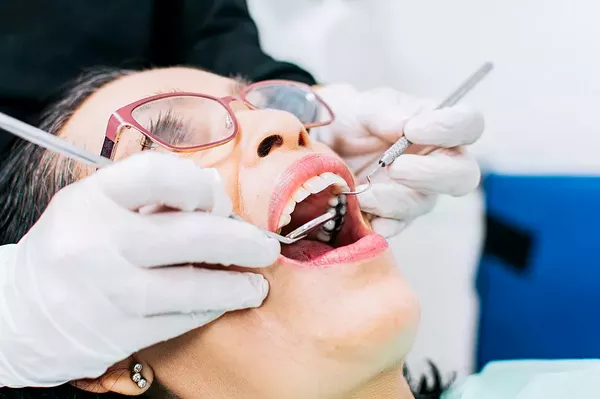Orthodontic braces have become a popular solution for individuals seeking to achieve a straighter and more aligned smile. In this comprehensive guide, we will delve into the intricacies of orthodontic braces, exploring the various types available, the benefits they offer, the science behind their functionality, the orthodontic treatment process, and essential tips for maintaining braces.
Types of Orthodontic Braces: A Diverse Range to Suit Every Smile
Orthodontic braces come in various types, each catering to different dental needs.
a. Traditional Metal Braces:
The most common and recognizable type, traditional metal braces consist of high-quality stainless steel brackets and wires. Their durability and effectiveness make them a reliable choice for correcting a wide range of dental issues.
b. Ceramic Braces:
For those seeking a more discreet option, ceramic braces feature tooth-colored or clear brackets that blend seamlessly with the natural color of teeth. This makes them a popular choice among individuals who wish to maintain a less noticeable appearance during their orthodontic treatment.
c. Lingual Braces:
Lingual braces are fitted on the inner surface of the teeth, providing an even more inconspicuous option. While not as common, they are favored by those who prioritize aesthetics without compromising the effectiveness of treatment.
In recent years, invisible aligners have gained popularity for their nearly invisible appearance and removable nature. Custom-made to gradually shift teeth into the desired position, these aligners offer flexibility and comfort.
Benefits of Orthodontic Braces: Beyond Aesthetics
While achieving a straighter smile is a significant benefit, orthodontic braces offer more advantages that extend beyond aesthetics.
a. Improved Oral Health:
Properly aligned teeth are easier to clean, reducing the risk of plaque buildup and gum disease. Braces contribute to a healthier oral environment, enhancing overall dental hygiene.
b. Enhanced Chewing and Speech:
Misaligned teeth can affect chewing efficiency and speech. Braces help correct these issues, ensuring proper alignment for improved functionality and communication.
c. Prevention of Dental Issues:
Orthodontic treatment not only addresses current dental concerns but also prevents potential issues such as tooth decay, gum disease, and jaw problems in the future.
d. Boosted Confidence:
A straight and well-aligned smile can significantly impact an individual’s self-esteem and confidence. Orthodontic braces not only enhance oral health but also contribute to an improved overall sense of well-being.
How Orthodontic Braces Work: The Science Behind the Transformation
Understanding the mechanics behind orthodontic braces helps demystify the treatment process.
a. Application of Pressure:
Braces function by applying controlled pressure on the teeth, causing them to shift gradually over time. This pressure stimulates bone remodeling, allowing the teeth to move into the desired position.
b. Adjustments and Tightening:
Regular orthodontic appointments involve adjustments and tightening of braces to ensure continuous progress. These appointments play a crucial role in achieving optimal results.
c. Duration of Treatment:
The duration of orthodontic treatment varies depending on the severity of the dental issues. While some individuals may see results in a matter of months, others may require a few years for comprehensive correction.
Orthodontic Treatment Process: A Step-by-Step Journey to a Beautiful Smile
The orthodontic treatment process involves several key steps that contribute to the successful alignment of teeth.
a. Initial Consultation and Examination:
The journey begins with a comprehensive examination by an orthodontist, who assesses the individual’s dental condition and discusses treatment options.
b. Customized Treatment Plan:
Based on the examination, the orthodontist develops a personalized treatment plan tailored to address specific concerns and achieve optimal results.
c. Brace Installation:
Once the treatment plan is established, the orthodontic braces are carefully and precisely installed on the teeth, initiating the transformation process.
d. Regular Follow-up Appointments:
Regular follow-up appointments are essential for adjustments, progress assessments, and any necessary modifications to the treatment plan.
Maintaining Your Braces: Tips for a Successful Orthodontic Journey
Proper care and maintenance play a crucial role in ensuring the effectiveness of orthodontic treatment.
a. Oral Hygiene Practices:
Maintaining impeccable oral hygiene is paramount. Regular brushing, flossing, and the use of interdental brushes help prevent plaque buildup around braces.
b. Dietary Considerations:
Some foods can pose a risk to braces. Avoiding sticky, hard, or overly crunchy foods can prevent damage and ensure a smoother orthodontic experience.
c. Follow Orthodontist’s Instructions:
Adhering to the orthodontist’s instructions regarding brace care, wearing elastics, and attending scheduled appointments is vital for successful treatment.
d. Emergency Care:
In the event of a loose bracket or wire, seeking prompt professional assistance is crucial. Orthodontists provide guidance on temporary solutions until a formal adjustment can be made.
In conclusion, orthodontic braces offer a transformative journey toward achieving a straighter and healthier smile. From the diverse types available to the benefits they provide, understanding the science behind their functionality, the treatment process, and essential maintenance tips ensures a successful orthodontic experience. Embracing orthodontic braces is not just about aesthetics; it’s a commitment to enhanced oral health and confidence.
Related Links:
Does brace change your face shape?
How to clean orthodontic retainers?
Why do dentist put rubber bands between teeth?





























